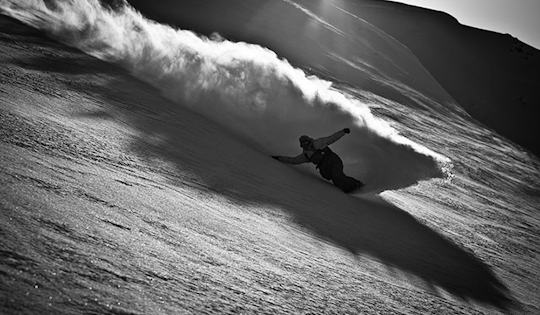As a personal trainer and professional snowboarder, I’m a huge advocate of training throughout the year to stay in tip-top shape. Many snowboarders’ off-season training only consists of skateboarding, hiking, and early season split boarding to get their legs tuned up for the season. From my experience though, a good regimen and consistent gym time will greatly improve athletic performance on the mountain.
When I do one-on-one training with clients, it’s formatted to their individual goals. When I coach classes, they are a pretty broad overview of exercise for the public. For me personally, when it comes to getting ready for the winter season, I find versatility as my biggest purpose of gym time. Snowboarding is such a dynamic sport with no one turn or one spin being the same as the last, so you must prepare the body for an ever-changing environment. I accomplish this by 4 different modalities of exercise:
Workout Element #1: Strength
The first I use is Strength. The best way for an athlete to create and maintain power output is strength. These days are form focused, and programmed for lean muscle mass. For instance, a day of 6×4 Front Squats, 6×5 Renegade Row with Push Ups, 6×8 Double Kettlebell clean to thruster, followed up by either a core effort or a low back complex for endurance in the low back.
I love Front Squats because, if I were jumping off a big cliff or landing a big jump I’m going to need to maintain upright core stability while absorbing my body weight in that impact. Things like renegade row are awesome for upper body strength for when we are out snowmobiling to get to the zones we need to for filming. Snowmobiling is like wrestling a bull all the way up a mountain using its horns to steer.
Workout Element #2: Work Capacity
The second I use is Work Capacity, or High Intensity Interval Training. We program these efforts for endurance, stamina, and density. These efforts are generally intervals, rounds for time, as many rounds as possible in a set time, countdown, or tabata format. This can even be applied to outdoor training where I’ll run up a 1 mile mountain, for time.
I love these efforts because they bring you to the brink of failure and push you to keep going. If I’m out in the mountains filming and we are racing the sun to get the shot in good light, I have to be able to push myself as hard as possible hiking, while still maintaining the energy to perform on camera.
Workout Element #3: Dynamic Movement
The third format I use is dynamic movement. These days I love to experiment with new exercises I’ve learned, or master old ones. A couple of examples being, Kettlebell Windmill, Turkish Get up, Kettlebell Snatch, Pistols to Double Lunge/Lateral Lunges, or almost any exercise involving a sandbag or alternative exercise tools.
These efforts are my insurance policy for the mountain. When you’re shredding through trees, going fast and making fast explosive turns, your body needs to be able to adapt and move in new ways effortlessly. Then, potentially jump off of something and if you need to tumble you can do so effectively and pop right up.
Workout Element #4: Durability & Flexibility
The forth format I use is durability and flexibility. Sometimes I’ll incorporate these into those other days or sometimes I’ll make this my whole days worth of stuff. As far as durability I use a lot of Gluteus Medius exercises to maintain stability and power from the hips.
This one can be tricky because you need that stability but you need to find a balance between strengthening, and loosening that muscle group. If you don’t find that balance you may notice less fluidity in your gait or low back pain. I also train durability in the shoulders because that is one of the number one injuries in snowboarding.
With that being said, I make sure to foam roll heavily around my shoulders to reduce impingement and leave range of motion in the joint. Foam rolling is huge for snowboarders to release the fascia, reduce tension on joints, and increase recovery time.
If I need deeper release I rely on a tennis ball or lacrosse ball. Lastly, I make sure to stretch, a lot. My favorite form of stretching is active isolated stretching, with the facilitation of a rope. This is a great way to get in dynamic, yet specific, stretching while maintaining elasticity in the muscle.
Overall I wish I could get more of my snowboarder friends to exercise and practice these principals. It’s like herding cats. Snowboarders aren’t exactly known for being the most upstanding members of society. Times are changing though.
The cream of the crop and the ones actually making a career out of it are taking it serious and training hard to be the elite out of all the fish in the sea. Snowboarding in the mountains is one of the most beautiful things on this planet, but done without caution or preparation, the mountains can eat you alive





)





